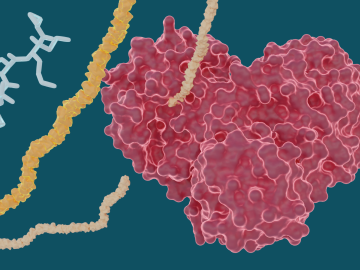
Filter News
Area of Research
- Advanced Manufacturing (1)
- Biology and Environment (20)
- Computational Engineering (1)
- Computer Science (1)
- Energy Science (21)
- Fusion and Fission (4)
- Isotopes (16)
- Materials (38)
- Materials for Computing (6)
- National Security (13)
- Neutron Science (46)
- Nuclear Science and Technology (3)
- Sensors and Controls (1)
- Supercomputing (25)
News Type
News Topics
- (-) Artificial Intelligence (44)
- (-) Biomedical (30)
- (-) Isotopes (33)
- (-) Microscopy (28)
- (-) Neutron Science (64)
- (-) Security (19)
- 3-D Printing/Advanced Manufacturing (61)
- Advanced Reactors (14)
- Big Data (20)
- Bioenergy (48)
- Biology (53)
- Biotechnology (17)
- Buildings (25)
- Chemical Sciences (44)
- Clean Water (9)
- Composites (15)
- Computer Science (77)
- Coronavirus (23)
- Critical Materials (13)
- Cybersecurity (23)
- Education (3)
- Element Discovery (1)
- Energy Storage (56)
- Environment (78)
- Exascale Computing (16)
- Fossil Energy (1)
- Frontier (19)
- Fusion (26)
- Grid (23)
- High-Performance Computing (43)
- Hydropower (2)
- ITER (3)
- Machine Learning (23)
- Materials (69)
- Materials Science (71)
- Mathematics (5)
- Mercury (6)
- Microelectronics (1)
- Molten Salt (3)
- Nanotechnology (35)
- National Security (35)
- Nuclear Energy (44)
- Partnerships (33)
- Physics (42)
- Polymers (18)
- Quantum Computing (14)
- Quantum Science (36)
- Simulation (18)
- Space Exploration (3)
- Statistics (1)
- Summit (24)
- Transportation (38)
Media Contacts

Brian Damiano, head of the Centrifuge Engineering and Fabrication Section, has been elected fellow of the American Society of Mechanical Engineers.

Marcel Demarteau is director of the Physics Division at the Department of Energy’s Oak Ridge National Laboratory. For topics from nuclear structure to astrophysics, he shapes ORNL’s physics research agenda.

In the quest for advanced vehicles with higher energy efficiency and ultra-low emissions, ORNL researchers are accelerating a research engine that gives scientists and engineers an unprecedented view inside the atomic-level workings of combustion engines in real time.

Six scientists at the Department of Energy’s Oak Ridge National Laboratory were named Battelle Distinguished Inventors, in recognition of obtaining 14 or more patents during their careers at the lab.

Porter Bailey started and will end his 33-year career at ORNL in the same building: 7920 of the Radiochemical Engineering Development Center.

Six ORNL scientists have been elected as fellows to the American Association for the Advancement of Science, or AAAS.

Experiments led by researchers at ORNL have determined that several hepatitis C drugs can inhibit the SARS-CoV-2 main protease, a crucial protein enzyme that enables the novel coronavirus to reproduce.

ORNL has added 10 virtual tours to its campus map, each with multiple views to show floor plans, rotating dollhouse views and 360-degree navigation. As a user travels through a map, pop-out informational windows deliver facts, videos, graphics and links to other related content.

When Sandra Davern looks to the future, she sees individualized isotopes sent into the body with a specific target: cancer cells.

To better understand how the novel coronavirus behaves and how it can be stopped, scientists have completed a three-dimensional map that reveals the location of every atom in an enzyme molecule critical to SARS-CoV-2 reproduction.


